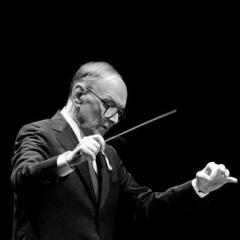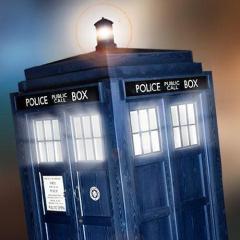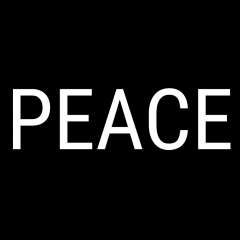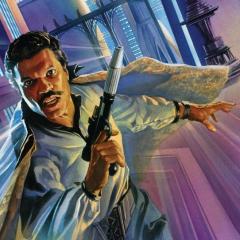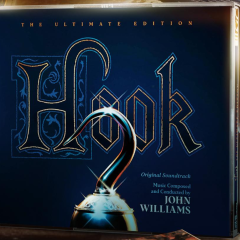
oierem
Members-
Posts
537 -
Joined
-
Last visited
Recent Profile Visitors
6,741 profile views
-
 ThePenitentMan1 reacted to a post in a topic:
Best single in-film statement of every major Star Wars theme?
ThePenitentMan1 reacted to a post in a topic:
Best single in-film statement of every major Star Wars theme?
-
 Taikomochi reacted to a post in a topic:
Best single in-film statement of every major Star Wars theme?
Taikomochi reacted to a post in a topic:
Best single in-film statement of every major Star Wars theme?
-
Best single in-film statement of every major Star Wars theme?
oierem replied to artguy360's topic in JOHN WILLIAMS
A great cue, but not Anakin's theme. -
 oierem reacted to a post in a topic:
New Lord Of The Rings Film: The Hunt For Gollum (Andy Serkis stars & directs)
oierem reacted to a post in a topic:
New Lord Of The Rings Film: The Hunt For Gollum (Andy Serkis stars & directs)
-
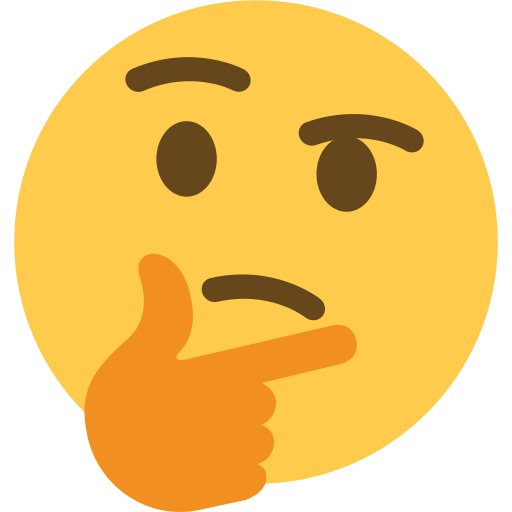 enderdrag64 reacted to a post in a topic:
new discovery - original Cantina Band cue title
enderdrag64 reacted to a post in a topic:
new discovery - original Cantina Band cue title
-
new discovery - original Cantina Band cue title
oierem replied to enderdrag64's topic in JOHN WILLIAMS
According to the liner notes of the 1997 CD release, 8 takes were recorded for Cantina Band 1 (the 4th take was used, unedited). And only two takes for Cantina Band 2 (the 1st take was used, again, unedited). -
 enderdrag64 reacted to a post in a topic:
What’s a score you wish John Williams hadn’t done?
enderdrag64 reacted to a post in a topic:
What’s a score you wish John Williams hadn’t done?
-
 Once reacted to a post in a topic:
What’s a score you wish John Williams hadn’t done?
Once reacted to a post in a topic:
What’s a score you wish John Williams hadn’t done?
-
 Taikomochi reacted to a post in a topic:
What’s a score you wish John Williams hadn’t done?
Taikomochi reacted to a post in a topic:
What’s a score you wish John Williams hadn’t done?
-
 Trope reacted to a post in a topic:
What’s a score you wish John Williams hadn’t done?
Trope reacted to a post in a topic:
What’s a score you wish John Williams hadn’t done?
-
 GerateWohl reacted to a post in a topic:
What’s a score you wish John Williams hadn’t done?
GerateWohl reacted to a post in a topic:
What’s a score you wish John Williams hadn’t done?
-
Not true. By the time he started working on both HP2 and Memoirs, both SW films were already released.
-
 Arnaud2 reacted to a post in a topic:
new discovery - original Cantina Band cue title
Arnaud2 reacted to a post in a topic:
new discovery - original Cantina Band cue title
-
 Jay reacted to a post in a topic:
new discovery - original Cantina Band cue title
Jay reacted to a post in a topic:
new discovery - original Cantina Band cue title
-
1. Star Wars Saga 2. Indiana Jones Saga 3. Hook 4. Harry Potter Saga 5. E.T. I don't think this is cheating....
-
 oierem reacted to a post in a topic:
Temple of Doom is celebrating 40 years in 2024
oierem reacted to a post in a topic:
Temple of Doom is celebrating 40 years in 2024
-
Temple of Doom is celebrating 40 years in 2024
oierem replied to Edmilson's topic in General Discussion
The earliest story ideas for Temple of Doom are from fall 1981/early 1982, when Lucas had just adopted a baby and was in a "happy" moment of his marriage, as far as we know. The story conferences were held in April 1982. Lucas wrote the treatment in May 1982. The first draft was delivered in August 1982. Marcia Lucas asked for the divorce around summer 1982, I believe. It wasn't officially announced until June 1983. So yeah, I don't believe the basic elements from Temple of Doom come from Lucas' personal crisis. -
 oierem reacted to a post in a topic:
The Phantom Menace vs. Attack of the Clones vs. Revenge of the Sith
oierem reacted to a post in a topic:
The Phantom Menace vs. Attack of the Clones vs. Revenge of the Sith
-
 oierem reacted to a post in a topic:
DIAGON ALLEY TRACK MOVIE vs SOUNDTRACK ALBUM
oierem reacted to a post in a topic:
DIAGON ALLEY TRACK MOVIE vs SOUNDTRACK ALBUM
-
Philosopher's Stone was the first OST album I owned. At that time, I only had the 1997 SW set and the TPM UE, so I assumed that a soundtrack album always included the complete soundtrack. I had seen the film and the Diagon Alley/Great Hall music was one of my favourite pieces... and I just couldn't believe it wasn't on the set. That was my first encounter with the frustrating nature of the OST albums.
- 29 replies
-
- soundtrack
- Harry Potter and the Philosophers Stone
- (and 1 more)
-
 oierem reacted to a post in a topic:
DIAGON ALLEY TRACK MOVIE vs SOUNDTRACK ALBUM
oierem reacted to a post in a topic:
DIAGON ALLEY TRACK MOVIE vs SOUNDTRACK ALBUM
-
 oierem reacted to a post in a topic:
HOOK Ultimate Edition - MUSIC Discussion
oierem reacted to a post in a topic:
HOOK Ultimate Edition - MUSIC Discussion
-
Which means, the actual film version is missing!!! Jokes aside, this is a great set, one of the best ever for sure, both for the awesome music and the presentation. I do wonder, though, why do so many of you think that the original Banning Back Home is so superior? Not counting the free improv section (which is really fun) I don't really see any objective reason to call it superior to the revised version.
- 454 replies
-
- Hook
- Steven Spielberg
-
(and 1 more)
Tagged with:
-
 oierem reacted to a post in a topic:
HOOK Ultimate Edition - MUSIC Discussion
oierem reacted to a post in a topic:
HOOK Ultimate Edition - MUSIC Discussion
-
 oierem reacted to a post in a topic:
NEW book by Frank Lehman - The Skywalker Symphonies: Musical Storytelling in Star Wars
oierem reacted to a post in a topic:
NEW book by Frank Lehman - The Skywalker Symphonies: Musical Storytelling in Star Wars
-
Yes. The insert includes both the new music and part of the original cue in a shortened form, until it fades back into the ending of the original cue.
- 454 replies
-
- Hook
- Steven Spielberg
-
(and 1 more)
Tagged with:
-
 oierem reacted to a post in a topic:
HOOK Ultimate Edition - MUSIC Discussion
oierem reacted to a post in a topic:
HOOK Ultimate Edition - MUSIC Discussion
-
Do you know the exact ending point of the Insert? I always thought that it ended when it segues into the original cue material, but now I'm not sure, because I realize the original cue is shortened (I always thought it was a film edit).
- 454 replies
-
- Hook
- Steven Spielberg
-
(and 1 more)
Tagged with:
-
 oierem reacted to a post in a topic:
HOOK Ultimate Edition - MUSIC Discussion
oierem reacted to a post in a topic:
HOOK Ultimate Edition - MUSIC Discussion
-
As Jay put it, it fits in the sense that it contrast with the orchestral score that comes later. It's a gradual introduction to the world of magic. In fact, removing the Prologue track from the beginning of the soundtrack creates a better listening experience, in my opinion, as it's such a spoilery track.
-
Yes. Furthermore, in the London scenes, there is no music whenever the scene deals with the "real word". The music is used for when the "magic" creeps into the scenes (Wendy's first appearance, the haunted nursery scene, Wendy telling her story...) and is interrupted when Peter breaks the magic (when he closes the window for example). Once we get to Neverland, the film is scored pretty much wall-to-wall (although some sections were ultimately unused). It's an interesting way of scoring the film, similar to the first Harry Potter films. No music when there's no magic.
-
I find TLJ to be the weakest SW score, or at least, the one that I'm least interested in. Despite its great moments, thematically is lacking and relying heavily on reused music. ROS has stronger new themes and some good developments or previous themes (Ben, Rey). The result is quite stronger, in my opinion. TFA is the best of the trilogy, without a doubt. Much less dependent of previous scores, with awesome new themes, it has a strong and coherent narrative. But all three prequel scores are way above any of those three in every possible way.
-
The Indiana Jones and the Last Crusade Enchantment Thread
oierem replied to JTN's topic in General Discussion
The structure of Crusade is, at least on paper, perfectly balanced. Each 20-minute segment has a beginning, middle and a chase at the end. Part 1: Double prologue. Part 2: Venice and the boat chase. Part 3: Nazi castle and the motocycle chase. Part 4: Berlin and the aereal chase. Part 5: Desert and the tank chase. Part 6: Emotional climax. It's way more "perfect" than any of the other two films. Which is why it feels almost "too" neat. -
It's a good recommendation, but I don't agree with the idea. Even though the first Banning Back Home is great, and maybe even superior, my criteria for what's in the main playlist is to always follow the actual film score. "What Williams always intended" would include the original Never Feast, Ultimate War, or The Flight to Neverland. Or The Departure from E.T. without "Steven's fix". Or the original Binary Sunset. The final film score is always a result of the collaboration between composer and director.
- 454 replies
-
- Hook
- Steven Spielberg
-
(and 1 more)
Tagged with:
-
Having listened to all 3 Discs as presented (in three consecutive evenings), I've changed the placement of a few tracks, and I've just listened to the complete film score (without all the extras) for the second time, from beginning to end. It's now impossible to listen to all the themes without thinking about the lyrics, which creates a very different listening experience indeed! I've made three small changes: -I've removed the prologue (it's a musical spoiler and it's not part of the film score, so I've moved the first track to the very end of the additional music section.) -I've incorporated both non-Williams source cues to the main score presentation. (I always include the source music if it's composed or arranged by Williams. For me, it's part of the score, the same way When You're Alone or the Pirate Town music is). -I've swaped the Lost Boy Chase tracks, to include the film version on the main programme. Awesome set and awesome score.
- 454 replies
-
- Hook
- Steven Spielberg
-
(and 1 more)
Tagged with:


